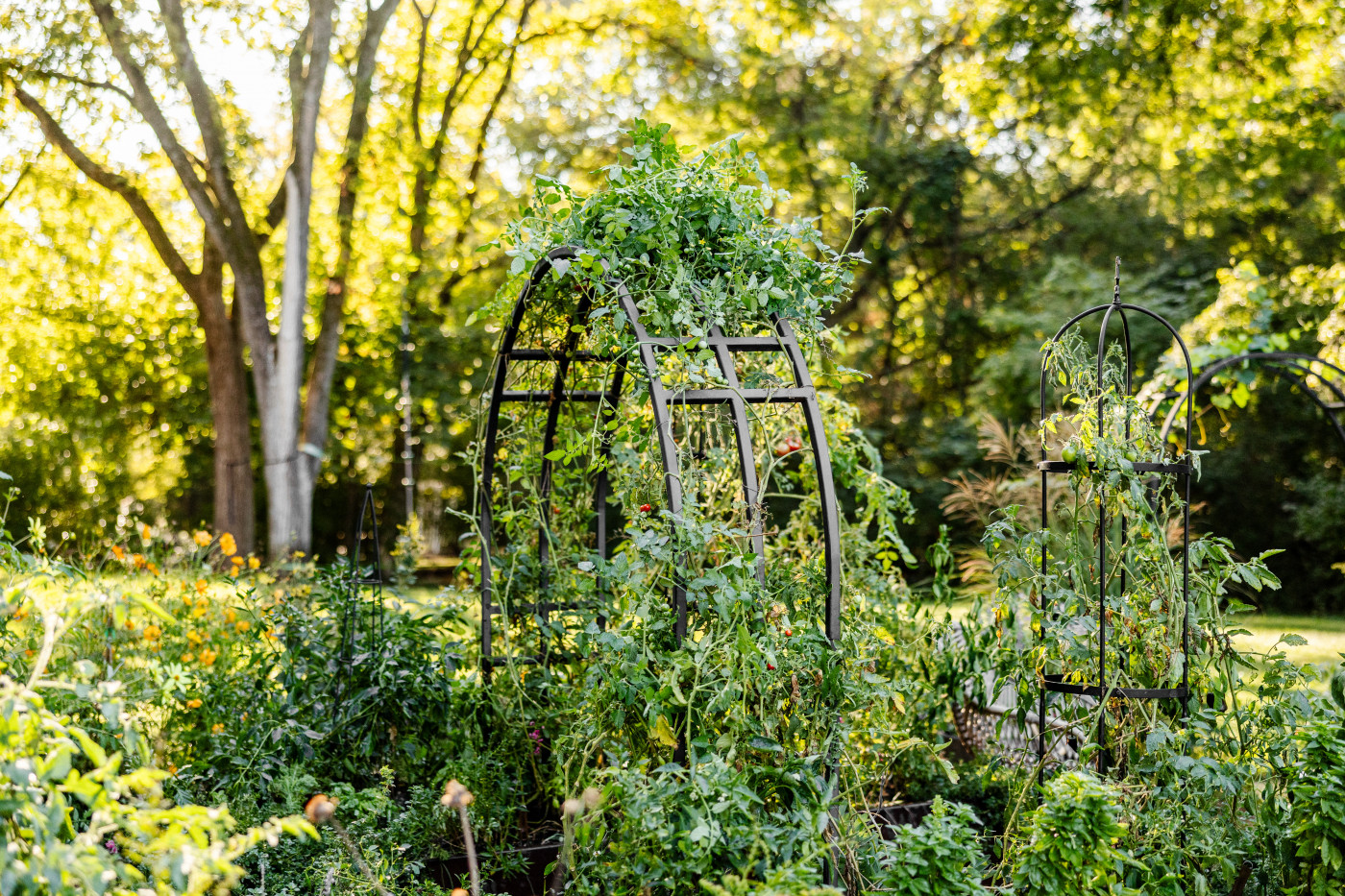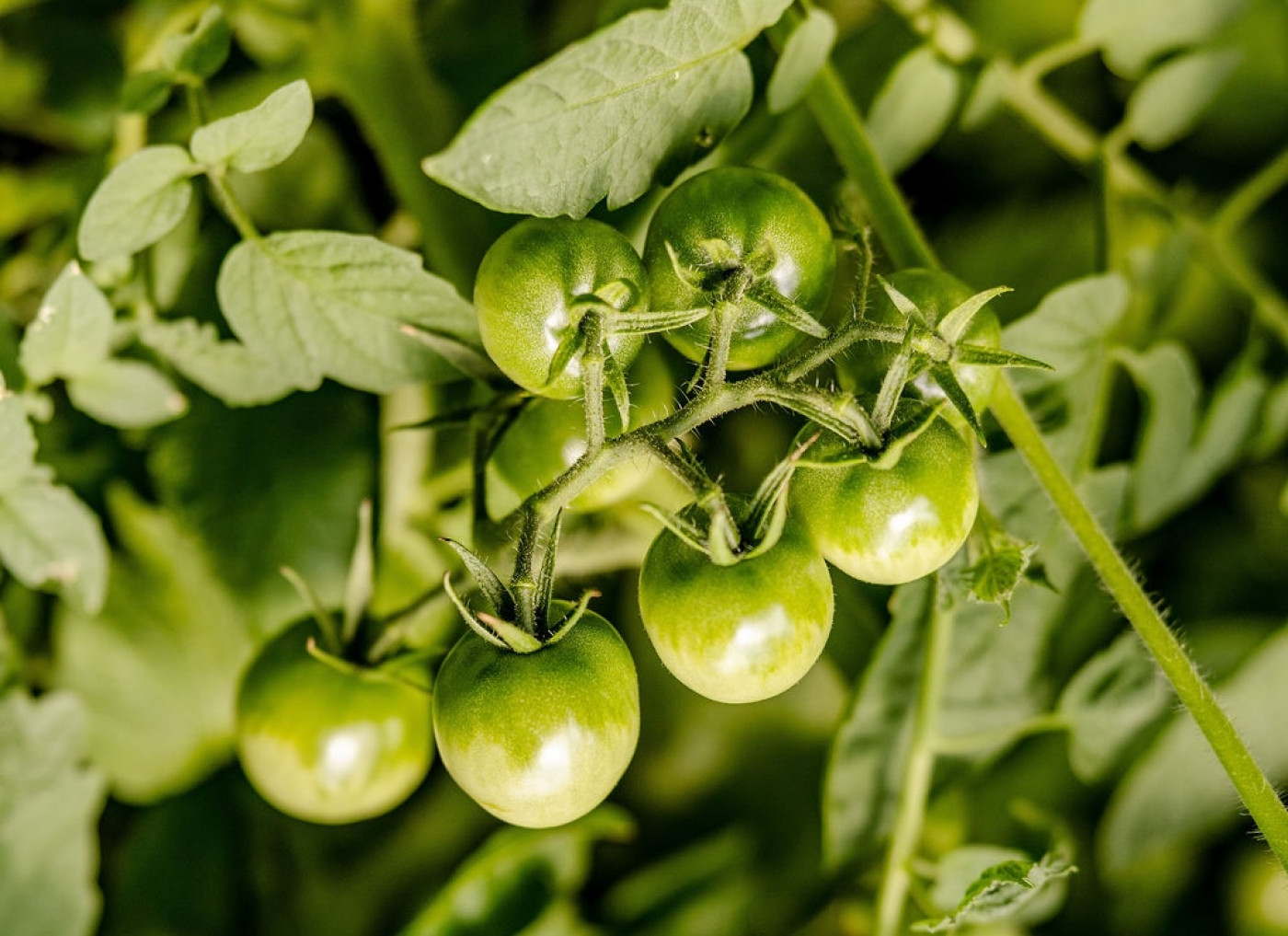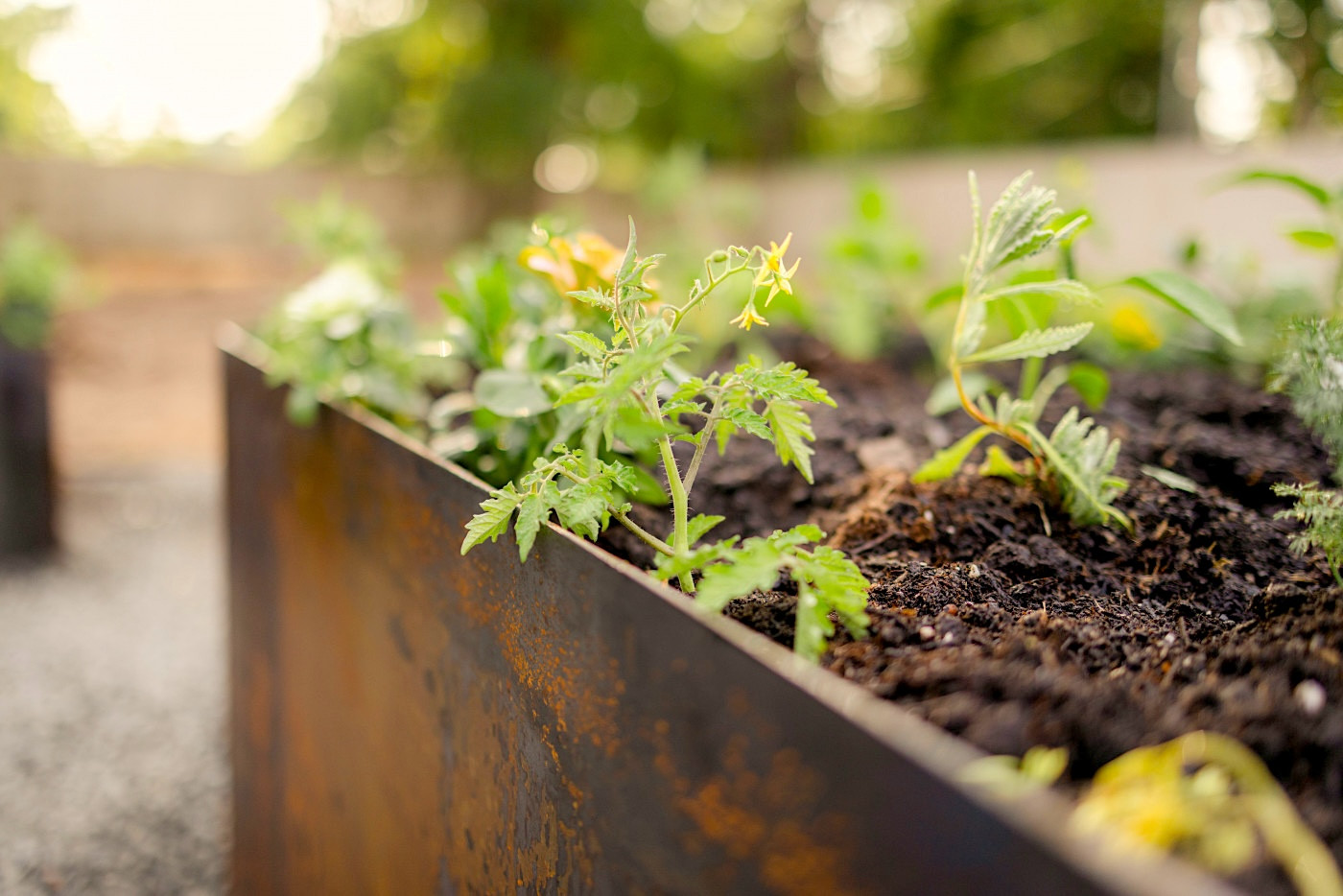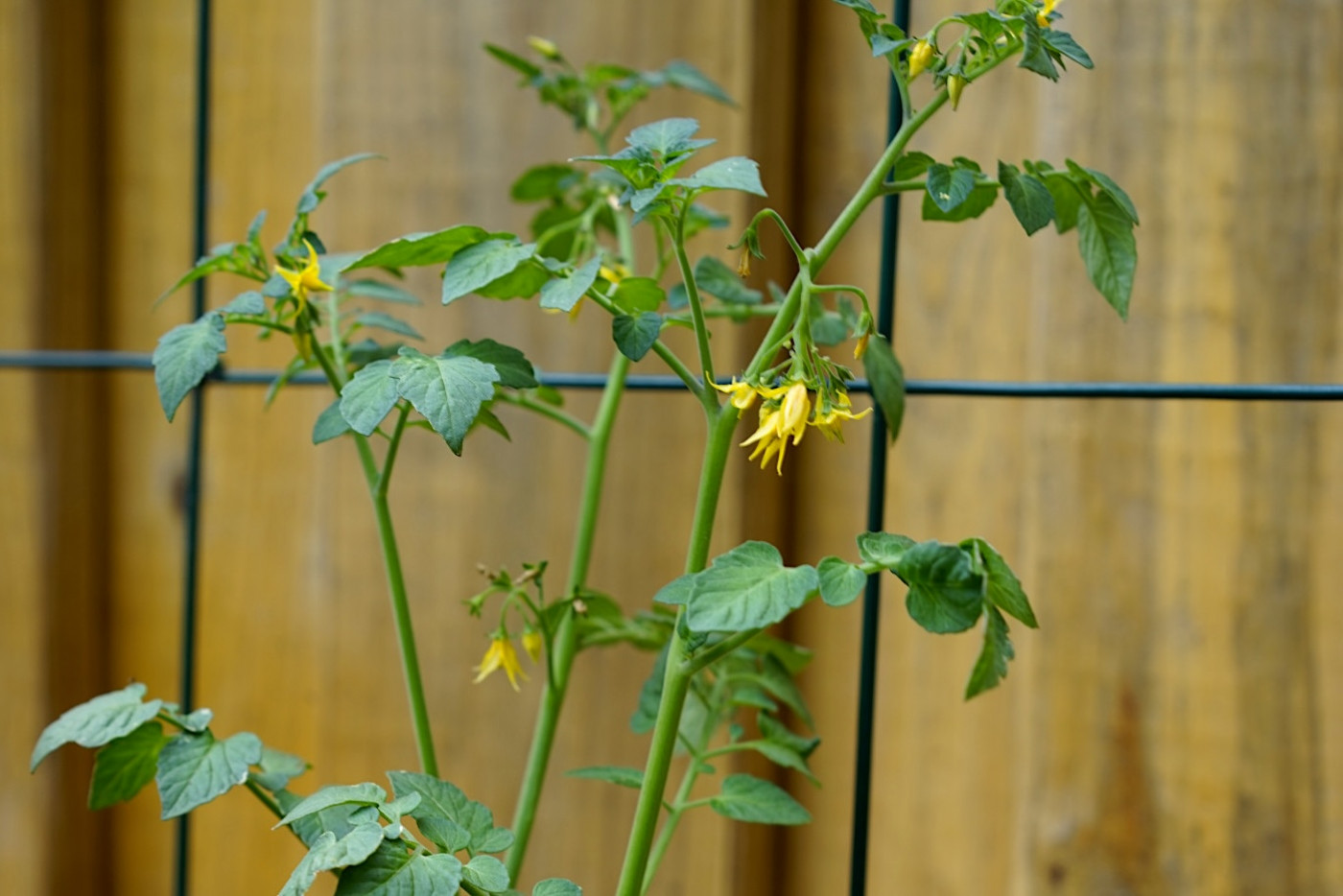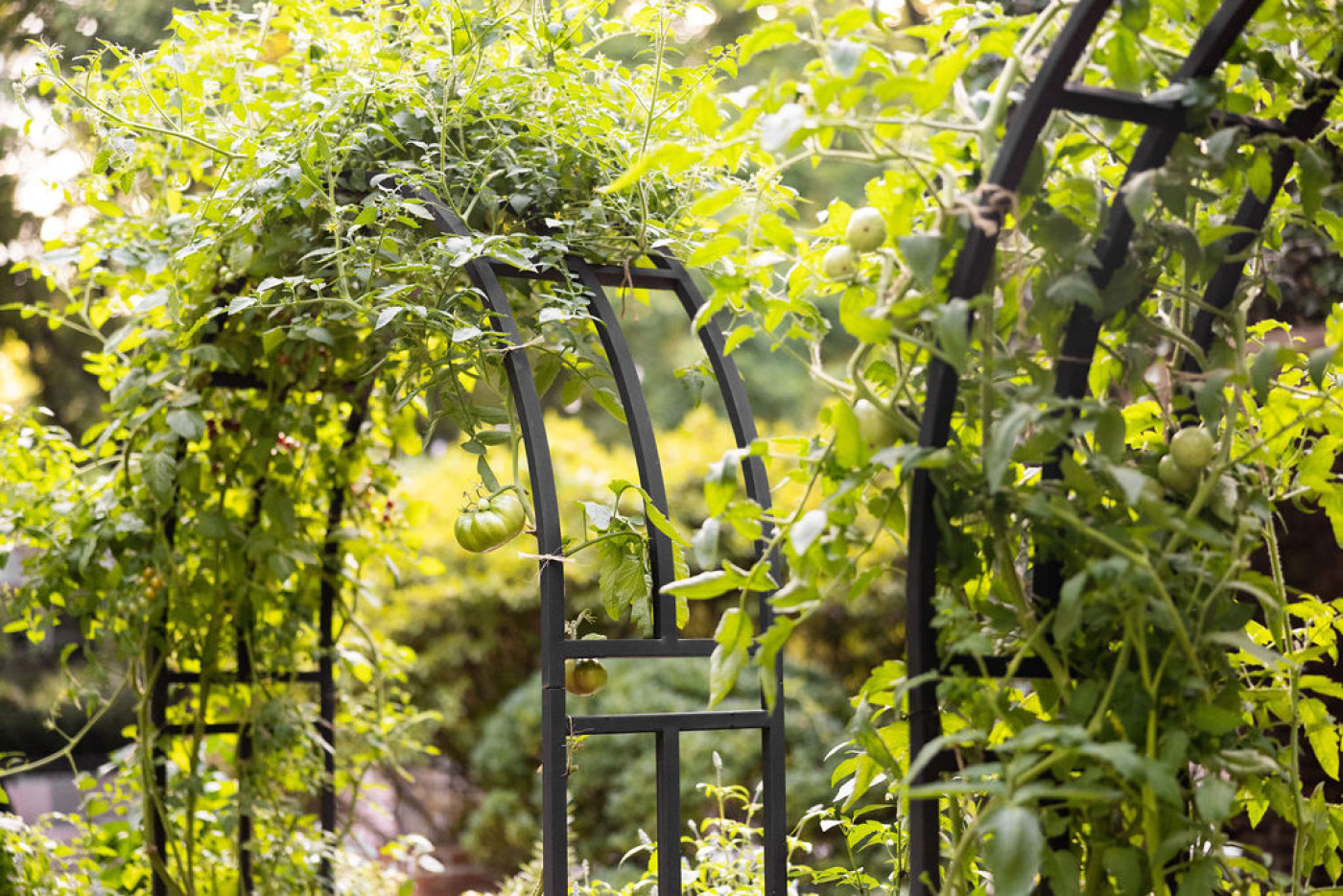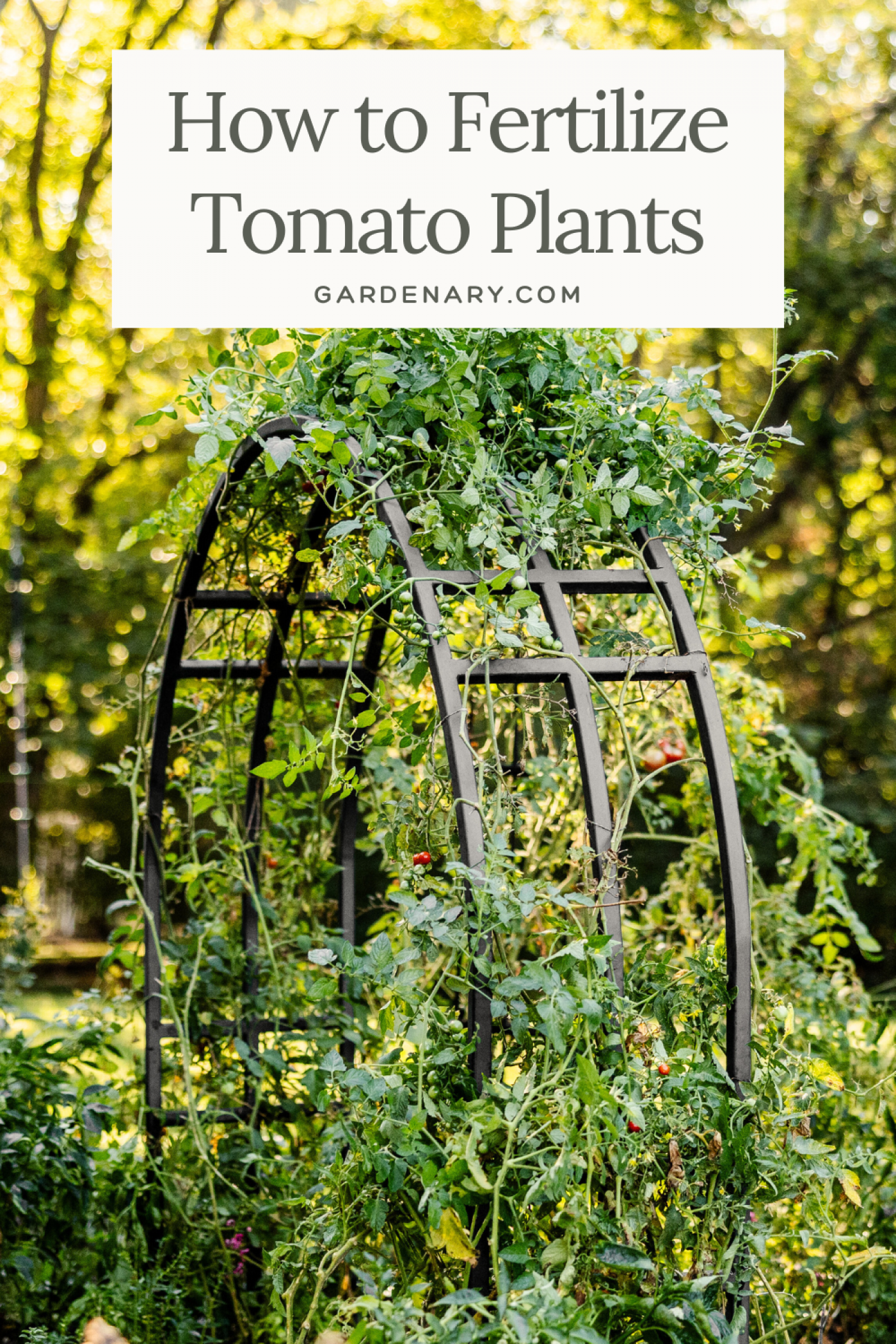Fertilizing Is Important to Growing Tomatoes
Like their eggplant and pepper cousins in the Solanaceae family, tomatoes are heavy feeders. They'll pull all the nutrients from the soil they can get and ask for more, please and thank you. They also intend to spend a long time in your garden growing and then sloooowly ripening their fruit.
All that to say, don't plant tomatoes just before you head out of town for three months. These plants do require a bit of your time and attention each week if you want to harvest loads and loads of juicy fruits from their vines. And one of the most important tending tasks you can do for your tomatoes is to feed these hungry gals.
Let's look at the best way to fertilize your tomato plants.
At a Glance
- Avoid all-purpose fertilizers, and instead, feed your plants natural sources of nutrients in stages.
- Provide natural sources of nitrogen like fish emulsion when your tomato plants are just getting started growing in the garden to support healthy stem and leaf development.
- Once the plants begin flowering and fruiting, add a phosphorus-rich fertilizer like rock dust or kelp meal to support fruit development.


Start Your Garden the Easy Way
Get growing with 10 foolproof seed varieties, a 120-page gardening guide, planting plans, and step-by-step video lessons—all designed to help you succeed. The Easy Garden Kit makes it simple, fun, and affordable to bring fresh food and flowers to your backyard.
Fertilize Your Tomato Plant in Stages
Nurseries and big box stores will try to sell you all-purpose fertilizers, promising you'll save money by buying one big bag that can feed all your plants for their entire lives. I urge you to skip these fertilizers in your garden. They're full of stuff your plants don't need except in certain stages.
Instead, give more careful thought to what you feed your plants and when. I learned from another gardener that every time your plant is doing something new, you should feed it. When I see my plants starting to flower, setting fruit, or growing new vines, I know it's time for me to come in and give them a little bit of extra food.
The food that you give your tomatoes, though, will vary based on what stage of life the tomato plant is in.
First, let's look at how to prepare your garden for planting tomatoes.
Stage 1: Amending Your Soil Before Planting Tomatoes
Focus on healthy soil before you plant a tomato seedling or transplant from the store. Start by enriching your soil with organic matter like compost. This improves soil structure, moisture retention, and most important, nutrient availability for your baby tomato plants. Basically, compost provides a slow-release of nutrients throughout the growing season.
If you've had issues growing tomatoes before, it's a good idea to do a soil test. Tomatoes thrive in slightly acidic soil, with a pH range of 6.0 to 6.8. Test your soil's pH level and make necessary adjustments using organic soil amendments like lime or sulfur.
Shop Our Soil Test Kit for Your Garden
My Soil Test Kit is the most accurate and easy-to-use soil test kit for DIYers. You’ll receive a report from a professional lab detailing the pH of your soil, plus 13 plant-available nutrient levels.
Stage 2: Fertilizing a Young Tomato Plant
When your plant is just getting started in the garden, you'll want to add nitrogen to strengthen the plant's main stalk and help it form green leaves. The strong main stalk will be important later when your plant is carrying lots of heavy fruit for you (think of the main stalk as the core of the plant). And the leaves are obviously an important part of photosynthesis for the plant.
Nitrogen is the essential nutrient that supports stems and leaves. (Jump to organic sources of nitrogen.)
Should you notice that your tomato plant is already flowering but still has a thin main stem, pinch the flowers off in order to give your plant more time to develop a strong central base before attempting the heavy work of flower and fruit production.
Stage 3: Fertilizing a Tomato Plant That's Forming Flowers & Fruit
When the plant's main stem is really nice and thick and the plant has started fruiting and flowering, then you can feed your plant a phosphorus-rich fertilizer to help it form fruit.
You don't want to give plants too much phosphorus until they're ready to set fruit. The best time to give tomato plants a phosphorus boost is when they begin to flower. That's one way to ensure that each one of those pretty yellow flowers leads to a fruit.
(Jump to organic sources of phosphorus.)
Gardenary's Warm Season Garden Planner
This beautifully designed planner takes the guesswork out of gardening and helps you stay organized, inspired, and on track during the warmer months.
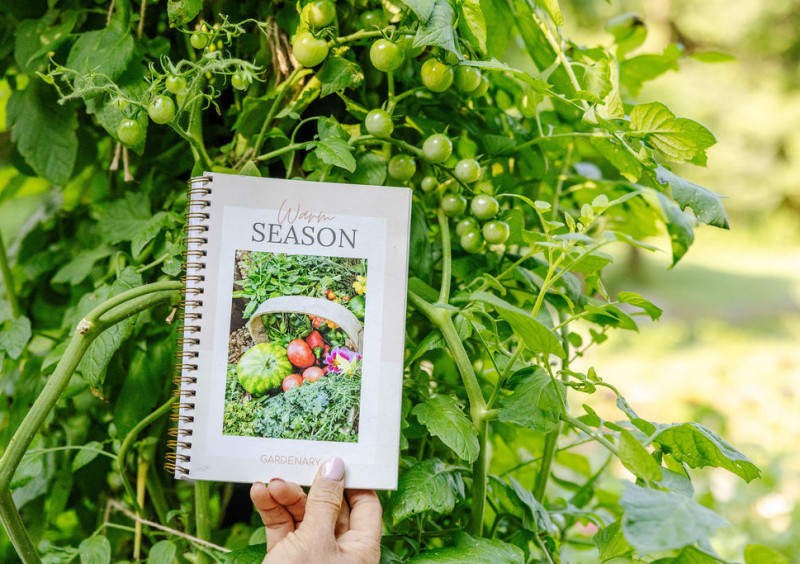
Heads up: This article contains Amazon affiliate links. When you purchase through links on this site, we may earn a small commission.
Organic Sources of Nitrogen for Young Tomato Plant Fertilization
I recommend using nutrients from natural sources, not synthetic ones. These sources will break down slowly over time, releasing nutrients into the soil without burning the plants (that just means to overstimulate them).
Organic nitrogen sources:
- Cottonseed Meal - A byproduct of the cotton industry, cottonseed meal is a great granular fertilizer to use in the garden. Be careful to only buy organic.
- Chicken or Rabbit Manure - Manure is a great way to imitate nature and feed your plants nitrogen. Make sure, however, that the manure is decomposed. Some people are opposed to using animal products in the garden—my two cents is that nature uses lots of animal products to produce super lush vegetation, and I like to copy nature.
- Coffee Grounds - Grounds add nitrogen, potassium, and phosphorous to the garden, and are a simple way to side dress your plants.
- Fish Emulsion - Derived from fish waste, fish emulsion is an excellent organic fertilizer rich in nitrogen. Apply according to the package instructions to promote vigorous vegetative growth.
Don't worry if you don't know what it means to side dress. We'll consider the different ways to apply tomato fertilizers in a bit.
Shop Gardenary's Tomato and Pepper Seed Collection
Our Tomato & Pepper Collection is perfect for gardeners who love bold flavors and beautiful variety. This set includes 6 tomato varieties—from juicy slicers to bite-sized cherries—and 5 pepper varieties ranging from sweet and crisp to delightfully spicy.
Phosphorus-Rich Organic Fertilizers for Flowering Tomato Plants
Again, our focus is on natural sources that will release nutrients over time.
Organic phosphorus sources:
- Fish Bone Meal - Fish bones are a natural source of phosphorous and can be used in the garden as a foliar feed or a granular side dressing.
- Bone Meal - Bone meal is a slow-release fertilizer that you can incorporate into the planting hole or use as a granular side dressing during the growing season. You can also use it as a foliar feed.
- Chicken and Rabbit Manure - Animal manures add nitrogen and phosphorous to the planting area and can be used in spare amounts to increase the phosphorous levels for your plants.
- Kelp Meal - Kelp meal, derived from seaweed, is a natural fertilizer that contains a balanced array of nutrients and trace elements. Sprinkle kelp meal around the base of the plants to boost overall plant health.
- Rock Dust or Soft Rock Phosphate - This is ground-up rock that adds potassium, phosphorus, and many micronutrients to your soil when worked into the garden as a granular side dressing.
Of your different options, mineral sources are typically cheaper and will last longer.
What to Look for When You're Shopping for a Tomato Fertilizer
When you're shopping for fertilizer at your local garden center, you'll notice the labels have three numbers on them, like 10:5:10 or 2:2:2. This is the NPK ratio.
The first number represents nitrogen (N). You'll recall that's what you want to focus on when the tomato plant is getting established and growing leaves. You'll want to avoid using nitrogen-heavy fertilizers in later stages; otherwise, your plants will have a lot of lush foliage and little to no fruits to show for your fertilizing efforts.
The second numbers is phosphorus (P), which is what we want to focus on when growing fruit.
The last number is potassium (K), which is really important when you're growing root crops.
Select a fertilizer that has a high number value for the stage of fertilizing that you’re doing. There are, of course, other important nutrients and minerals, but these are the main three.
Also, look for an OMRI-certified product at the store, not just organic.
Shop This Trellis
Our bestselling Nicole Arch Trellis is perfect for all your vining vegetables and strong enough for vining roses or other ornamental vining plants.
Product Features:
- Powder-coated black steel
- Four steel pieces that slide together without tools to form one arch trellis
- Four stakes to secure the trellis into the ground
- Measures 88" x 67" x 15"
How to Apply Fertilizer to Tomato Plants
There are two main types of fertilizers: liquid and granular. I like liquid because it's easy for the plants to take in. I compare it to drinking liquid cough syrup instead of trying to swallow a pill if you're sick. Liquid fertilizers typically need to be diluted before they're applied so that you don't burn your plants. Whatever you're using, make sure to read the directions and avoid over-applying.
Let's look at two different ways to feed your tomato plants.
Foliar Feed
Liquid fertilizers can be first diluted with water according to the directions on the bottle and then poured into a spray bottle to use it as a foliar feed. Spray onto the front and back of the leaves of your fruiting plant. The leaves will absorb the nutrients.
You can do this once a week or every other week until it's time for your tomato plants to come out of the garden.
Avoid fertilizing with a foliar feed on days that are super sunny or right before rain. Ideally, you'd wait for an overcast day and apply the fertilizer early in the morning or late in the evening. If you find yourself unable to foliar feed during a rainy season, you could do a side dressing instead since the rain will help move the feed through the plant's system.
Side Dressing
You can apply compost, liquid fertilizers like fish emulsion, or granular fertilizers as a side dressing around the base of your tomato plants. This replenishes nutrient levels and sustains plant growth.
For liquid fertilizers, you'll mix the product with water can and use it the way you'd normally water, right around the base of your plants.
If you're using a granular fertilizer, you'll rake it into the soil area around the base of the plants, taking care not to disturb the roots. Make sure to water granular fertilizers in well.
Side dressing adds the fertilizer right where it can disperse through the soil and feed the roots of the plant, before being taken up into the plant.
Gardenary's Warm Season Garden Planner
This beautifully designed planner takes the guesswork out of gardening and helps you stay organized, inspired, and on track during the warmer months.

Add Compost to Your Tomato Plants for the Ultimate Nutritional Boost
There is one thing you can give to tomato plants at all stages, and that's compost. Routinely adding compost around the base of your tomatoes is a natural way to feed your plants. Compost contains the best food you can give to your plants.
I love mushroom compost, which is a byproduct of the mushroom farming industry. It's easy to add to the garden, and you don't have to worry about it burning your plants. Mushroom compost is just a natural way to add to your soil's nutrients and feed your plants from the bottom up.
You can also use something called compost tea, which is made by putting compost into a bucket, aerating it, and basically steeping it in water the way you would tea. The result can be used as a foliar feed for the leaves or soil drench to provide a quick boost of nutrients to your tomato plants.
Other Tips to Grow Healthy Tomato Plants
I've found the greatest success from organically fertilizing my plants once a week. While I'm feeding them, I also take a couple minutes to prune old or damaged leaves and attach new growth securely to the trellis.
More tips to keep your tomato plants healthy and productive:
- Tomatoes love to grow in warmer temperatures and receive a ton of sunshine. Don't even think about putting your tomato plant outside before your final threat of frost has passed unless you want to remove smelly, wilted leaves from your garden (trust me on this one).
- Tomatoes have deep roots and prefer to grow in raised beds filled with great soil to give their roots plenty of room to stretch and dig down.
- Tomatoes need a trellis for support (bush varieties can do fine with a tomato cage, while vining plants will quickly outgrow a cage).
- Bury your tomato plant deeper than the neck to encourage the plant to form more roots and build a stronger main stem.
- Properly prune and train your tomato plants to improve air circulation, reduce disease risk, and enhance sunlight exposure. This promotes healthier growth and higher productivity.


Feed Your Way to Your Most Productive Tomato Plants Ever
Give your plants the nutrients they need based on their stage of growth and maintain a regular feeding schedule. When in doubt, add compost. That's how you grow tomato vines dripping with fruit.
No matter what you decide to grow in the garden, don't grow alone. Gardenary has all the resources you need to keep your plants happy and healthy.
Thanks for being here and helping to make gardening ordinary again!

